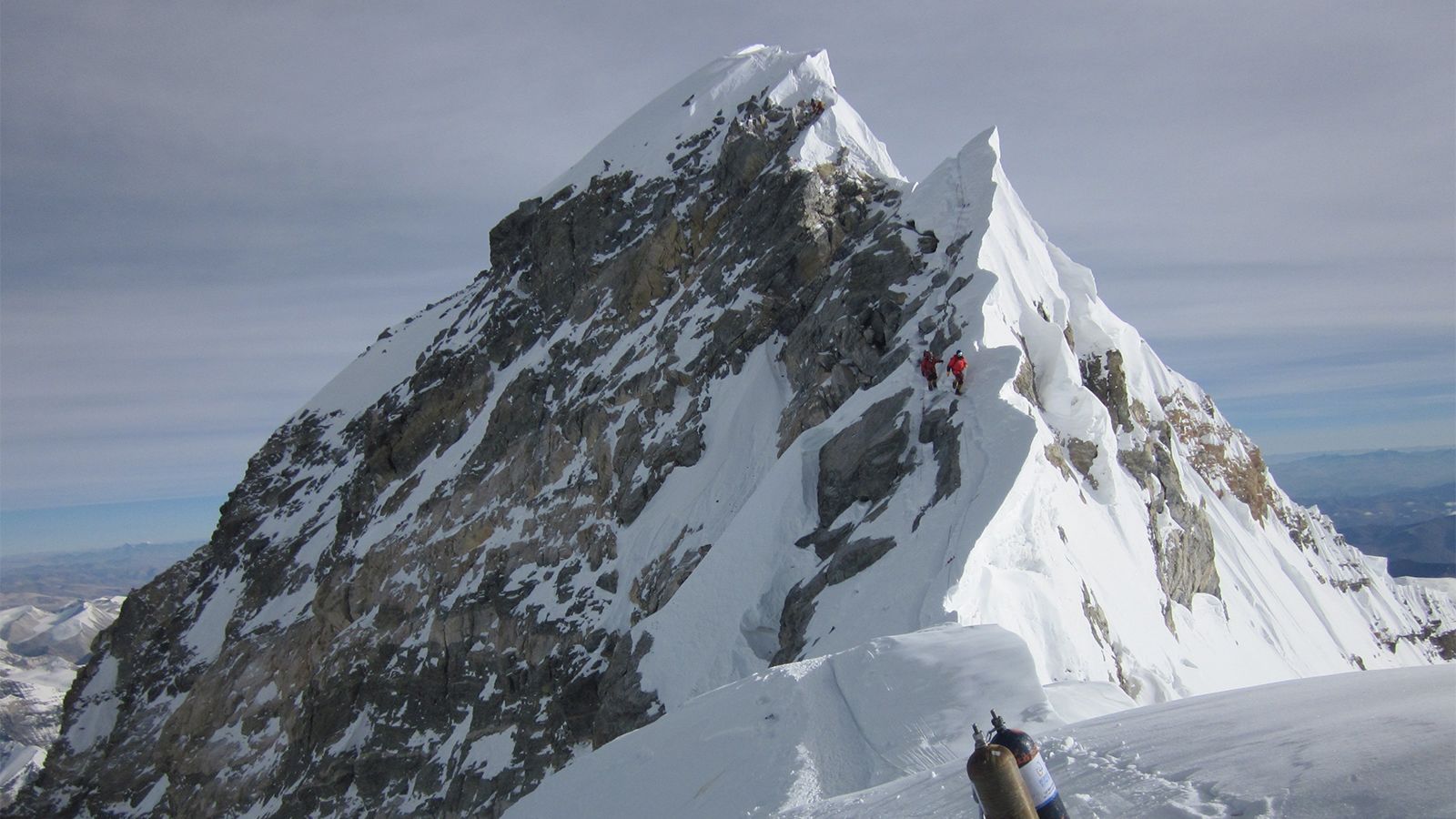Exploring the Death Zone on 8000m Peaks and the Technological Triumphs of Acclimatisation
The Death Zone, a term that sends shivers down the spine of even the most seasoned mountaineer, refers to altitudes above 8,000 meters (26,247 feet) where the air pressure is so thin that the human body struggles to acclimatize and function properly. Climbers entering this perilous realm face an elevated risk of altitude sickness, hypoxia, and the ever-present danger of death. As we delve into the history of the Death Zone on 8,000m peaks, we witness the tales of triumph and tragedy that have unfolded on the world's highest summits. Furthermore, we explore the pivotal role that technology has played in enhancing acclimatization methods, providing a glimmer of hope in the thin air where the line between life and death is razor-thin.

The Historical Tapestry of the Death Zone
The concept of the Death Zone emerged in the mid-20th century as mountaineers began pushing the boundaries of exploration to the world's loftiest peaks. One of the earliest encounters with the Death Zone was during the 1953 British expedition to Mount Everest, where Sir Edmund Hillary and Tenzing Norgay reached the summit for the first time in history. As climbers ventured into these extreme altitudes, they discovered the physiological challenges posed by the thin air, including decreased oxygen levels and the body's struggle to maintain essential functions.
Subsequent expeditions to other 8,000m peaks, such as K2, Kangchenjunga, and Cho Oyu, reinforced the notion of the Death Zone as a formidable obstacle. Climbers faced not only the physical strain of ascending to these dizzying heights but also the psychological toll of knowing that every step further into the Death Zone increased the likelihood of severe altitude-related issues.
Keep Reading: Deadliest Everest Mountaineering Season Comes to a Close in Nepal
Technological Advancements: A Beacon of Hope in Thin Air
Over the decades, technological advancements have become a beacon of hope for climbers daring to venture into the Death Zone. One of the most significant breakthroughs came in the form of supplemental oxygen. In the early days of high-altitude mountaineering, climbers faced the daunting challenge of tackling the Death Zone without artificial assistance. The introduction of supplemental oxygen, however, revolutionized high-altitude climbing.
The first successful use of supplemental oxygen in the Death Zone occurred during the 1953 Everest expedition. Hillary and Norgay relied on closed-circuit oxygen systems, allowing them to breathe oxygen-rich air even in the thin atmosphere. This marked a turning point, opening up new possibilities for climbers to push beyond the traditional limits imposed by altitude.

Evolution of Acclimatization Techniques
While supplemental oxygen offered a lifeline in the Death Zone, climbers and researchers continued to explore ways to enhance the body's natural acclimatization process. Acclimatization, the physiological adjustment to high altitudes, involves the body's adaptation to lower oxygen levels by increasing the production of red blood cells and improving oxygen utilization.
In the early days of mountaineering, climbers relied solely on the gradual ascent method for acclimatization. This involved climbing to higher altitudes, spending time there to allow the body to adjust, and then descending to lower elevations for rest. While effective, this process was time-consuming and often impractical for expeditions with tight schedules.
The advent of technology brought forth new acclimatization techniques, most notably the use of hypoxic tents and altitude chambers. These innovations simulated high-altitude conditions, enabling climbers to undergo acclimatization in a controlled environment. Hypoxic tents, in particular, allowed climbers to sleep in an environment with reduced oxygen levels, promoting the production of red blood cells without the need for prolonged stays at high altitudes.

Keep Reading: Exclusive Interview: Lukas Furtenbach on Flash Climbing
Innovations in Climbing Gear
Technological advancements have not been confined to life support systems and acclimatization techniques alone; climbing gear has also undergone a transformation to better suit the demands of the Death Zone. Modern materials, designs, and manufacturing processes have resulted in gear that is lighter, more durable, and better suited to withstand the harsh conditions at extreme altitudes.
High-altitude apparel now incorporates advanced materials such as Gore-Tex for waterproofing and breathability, ensuring that climbers remain protected from the elements while maintaining comfort. Improved insulation technologies have made it possible for climbers to stay warm in sub-zero temperatures, reducing the risk of cold-related injuries.
Communication and Monitoring Systems
The Death Zone's isolation and extreme conditions make communication and monitoring crucial for the safety of climbers. In the early days of high-altitude exploration, communication was limited, and climbers often faced the challenges of isolation and uncertainty. Today, satellite phones, GPS devices, and advanced communication systems have revolutionized the way climbers stay connected with base camps and emergency services.
Real-time monitoring systems, including wearable devices and satellite tracking, provide crucial data on a climber's vital signs and location. This information not only aids in tracking the progress of an expedition but also serves as an early warning system for potential health issues. In the Death Zone, where rescue operations are logistically challenging, these monitoring systems can be the difference between life and death.

Challenges and Ethical Considerations
While technology has undoubtedly transformed the landscape of high-altitude mountaineering, it has also raised ethical considerations within the climbing community. The use of supplemental oxygen, for instance, has been a subject of debate. Traditionalists argue that relying on supplemental oxygen diminishes the purity and challenge of climbing in its rawest form. On the other hand, proponents assert that it is a necessary tool for ensuring the safety and success of climbers in the Death Zone.
Similarly, the use of advanced gear and communication systems has sparked discussions about the fine line between embracing technological assistance and maintaining the spirit of adventure and self-reliance. Striking a balance between leveraging technology for safety and adhering to the core values of mountaineering remains an ongoing conversation within the climbing community.
Conclusion: Navigating the Thin Line Between Triumph and Tragedy
As climbers continue to explore the Death Zone on 8,000m peaks, the historical narrative intertwined with triumphs and tragedies unfolds against the backdrop of technological advancements. From the pioneers of the 1950s who conquered Everest to the modern-day climbers equipped with state-of-the-art gear and acclimatization methods, the Death Zone remains an unforgiving and awe-inspiring realm.
Technology has undeniably expanded the realm of possibilities in high-altitude mountaineering, offering climbers tools to mitigate risks and enhance safety. Yet, the Death Zone retains its mystique, reminding us that, despite our technological prowess, nature's forces at extreme altitudes remain formidable and unpredictable. The journey into the Death Zone remains a test of not only physical endurance and technological mastery but also the indomitable human spirit that seeks to conquer the highest peaks on Earth. In navigating the thin line between triumph and tragedy, climbers must tread with respect for the mountains, a keen awareness of the risks, and an unwavering commitment to the pursuit of the summit.